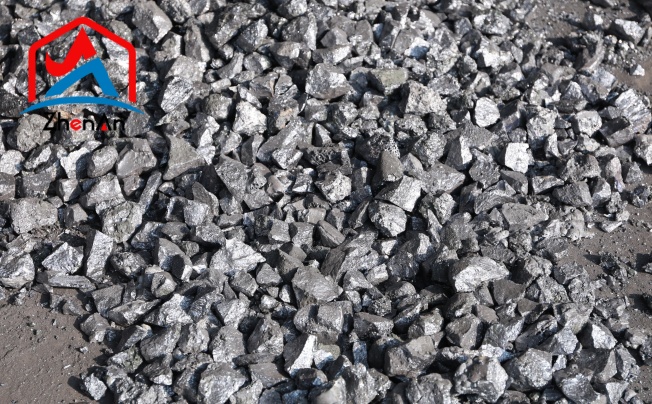One such ingredient that has gained attention in recent years is hydrated silica. But what exactly is hydrated silica, and more importantly, is it safe for our skin?
What is Hydrated Silica?
Hydrated silica, also known as silicic acid, is a compound derived from silicon dioxide. It is obtained by treating silicon dioxide with water, resulting in a gel-like substance that can be further processed into various forms.
Chemically, hydrated silica has the formula SiO2·xH2O, where x represents the varying amounts of water molecules attached to the silica structure. Skincare products often utilize hydrated silica due to its unique properties and versatility.
Its amorphous structure allows it to absorb moisture efficiently, making it an ideal ingredient for formulations such as lotions and creams. Additionally, hydrated silica can be synthesized into different particle sizes and shapes, allowing manufacturers to tailor its use depending on the desired effect.
Safety of Hydrated Silica for Skin
Potential Benefits for Skin Health
Hydrated silica offers several potential benefits for skin health due to its unique properties. One of its notable advantages is its absorbent nature, which allows it to effectively soak up excess oil and sebum on the skin's surface. This characteristic makes hydrated silica particularly beneficial for individuals with oily or combination skin types who struggle with shine control.
Furthermore, exfoliation is an essential aspect of any skincare routine as it removes dead skin cells, revealing a smoother complexion underneath. Hydrated silica particles possess gentle exfoliating properties that aid in this process without causing excessive irritation or micro-tears on the skin's surface – unlike harsher physical exfoliants like walnut shells or apricot kernels.
Additionally, another advantage of hydrated silica lies in its mattifying effect on the skin. By absorbing excess oil and reducing shine, formulations containing this ingredient can provide a more balanced appearance throughout the day. This benefit can be particularly appealing to those prone to greasy T-zones or struggling with makeup longevity.
Possible Concerns or Side Effects
While hydrated silica generally boasts a good safety profile, there are some considerations worth noting before incorporating products containing this ingredient into your skincare routine.
One concern revolves around using hydrating substances with larger particle sizes as physical exfoliants since they may prove abrasive on delicate facial areas or sensitive skin types if used excessively or aggressively. Moreover, individuals with known allergies or sensitivities should exercise caution when using products containing hydrated silica since allergic reactions are always possible when introducing new ingredients to your regimen.
It is advisable to perform a patch test before applying any new skincare product containing this ingredient onto your face— especially if you have experienced adverse reactions previously— ensuring compatibility with your unique skin type. By being aware of both the potential benefits and concerns surrounding hydrated silica usage in skincare products, consumers can make informed decisions about whether incorporating such formulations aligns well with their specific needs and preferences.
Discovering Findings on the Impact of Hydrated Silica on Skin Health
Hydrated silica has been shown to possess absorbent properties that can help control excess oil and shine on the skin's surface, making it a popular ingredient in mattifying skincare products.
Additionally, its gentle exfoliating effects contribute to improving skin texture and promoting cell turnover, which can result in a smoother and brighter complexion. By delving into these findings, individuals can gain a deeper understanding of how incorporating hydrated silica into their skincare routine may positively impact their skin's overall condition.
When comparing hydrated silica with other common skincare ingredients, such as AHAs (alpha hydroxy acids) or BHAs (beta hydroxy acids), it is essential to consider their unique properties and mechanisms of action. While AHAs and BHAs primarily work by exfoliating dead skin cells and promoting cell renewal from within the pores, hydrated silica functions more at the surface level by physically removing impurities through its abrasive nature.
Understanding these differences allows individuals to make informed decisions when selecting skincare products tailored to their specific needs. By exploring this comparative analysis, consumers can determine whether incorporating products containing hydrated silica aligns with their skincare goals and preferences.
How to Safely Use Skincare Products Containing Hydrated Silica
Advice from Dermatologists and Skincare Experts
Firstly, it is recommended to perform a patch test before applying any new product containing hydrated silica on your entire face or body. Apply a small amount of the product to a discreet area, such as behind the ear or on the inner side of the forearm. Monitor the area for at least 24 hours for any signs of irritation or allergic reactions. If redness, itching, or swelling occurs, avoid using the product altogether.
Additionally, dermatologists suggest starting with lower concentrations of hydrated silica in skincare products if you have sensitive skin. Gradually increase usage over time as your skin becomes accustomed to the ingredient. It's also essential not to overuse products with hydrated silica, especially those that act as physical exfoliants since excessive scrubbing could lead to abrasion and irritation.
Tips for Incorporating Products with Hydrated Silica into a Skincare Routine
Incorporating skincare products containing hydrated silica requires thoughtful integration into your existing routine. One tip is to begin by selecting one product containing this ingredient initially rather than introducing multiple simultaneously. This approach allows you to monitor how your skin reacts and determine whether it suits your needs.
When using cleansers or masks with hydrated silica particles for exfoliation purposes, ensure gentle application by using light pressure during massage movements. Avoid harsh scrubbing that may cause micro-tears on the skin's surface.
Opting for circular motions while cleansing can help improve blood circulation without compromising delicate facial tissues. It is crucial not to forget about proper hydration after exfoliating with products featuring hydrated silica particles.
Utilize moisturizers formulated specifically for your skin type and apply them generously after cleansing or exfoliating routines involving these types of products. This step helps restore moisture levels while maintaining the skin barrier integrity.






